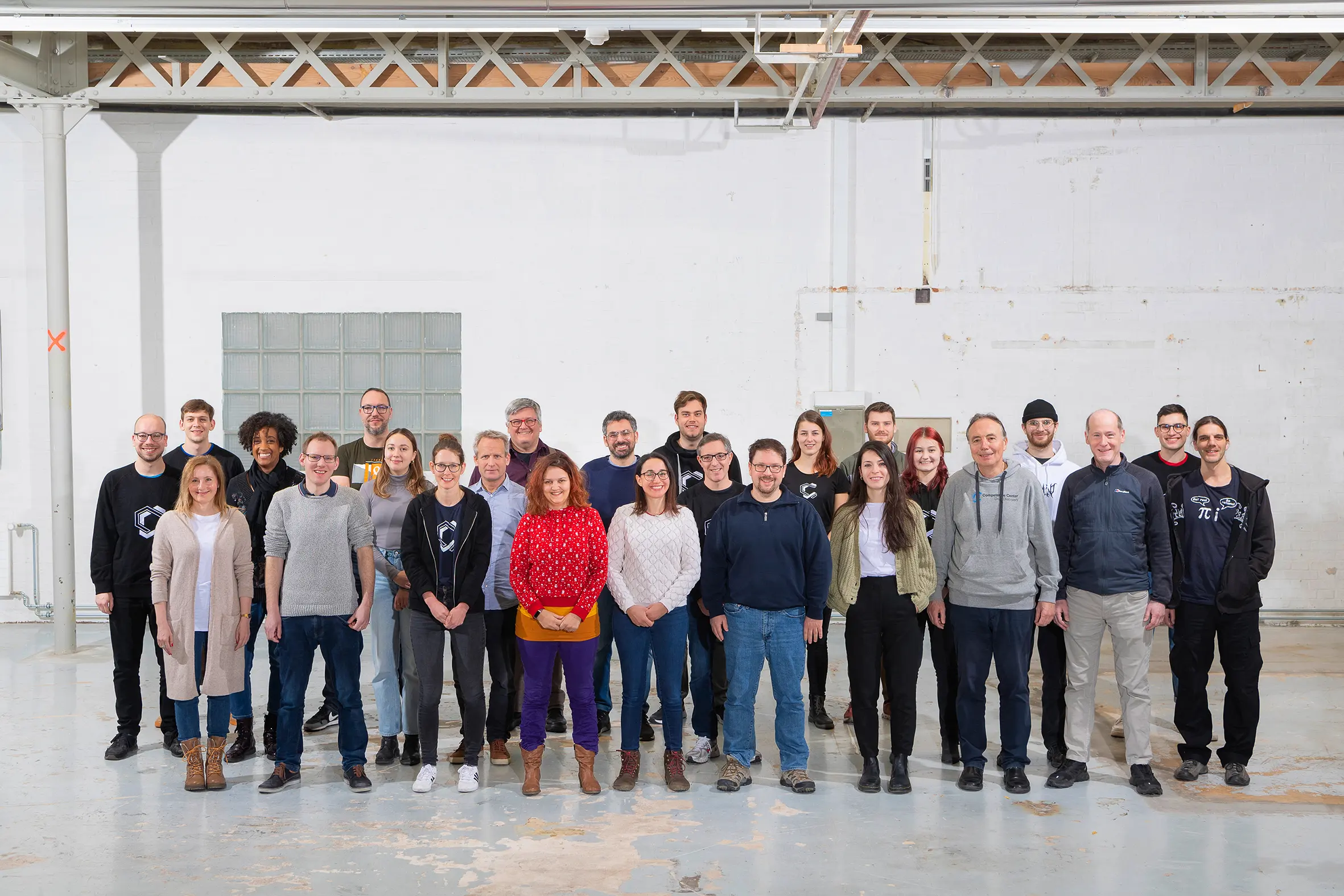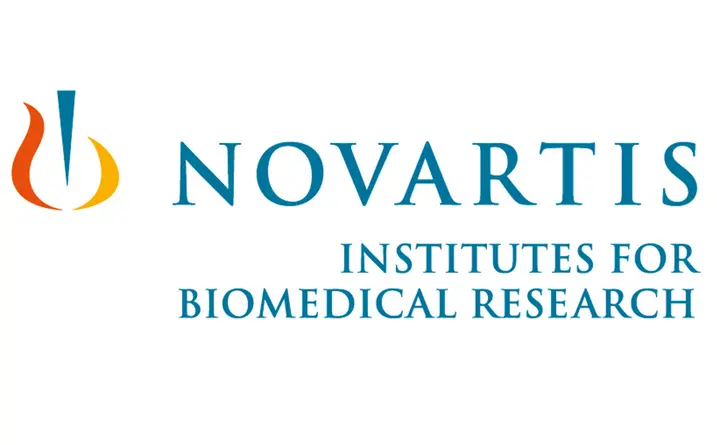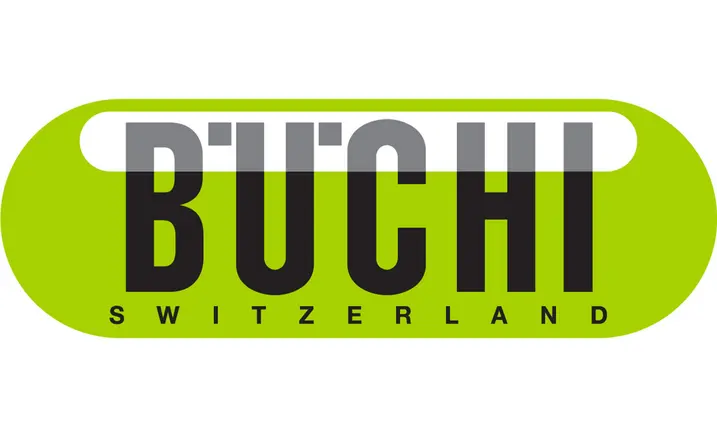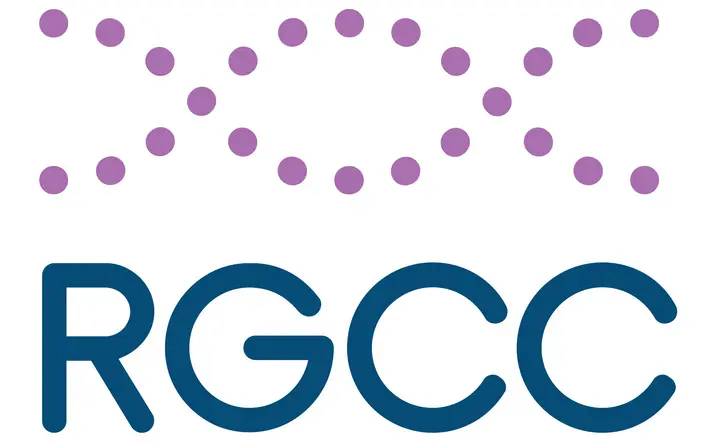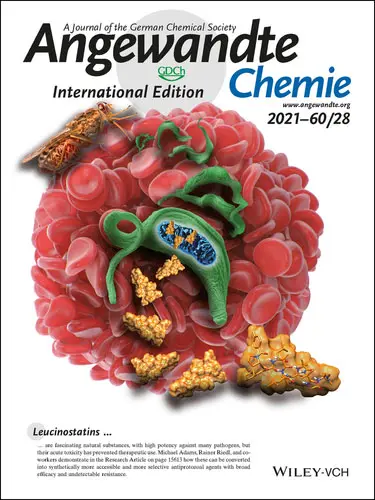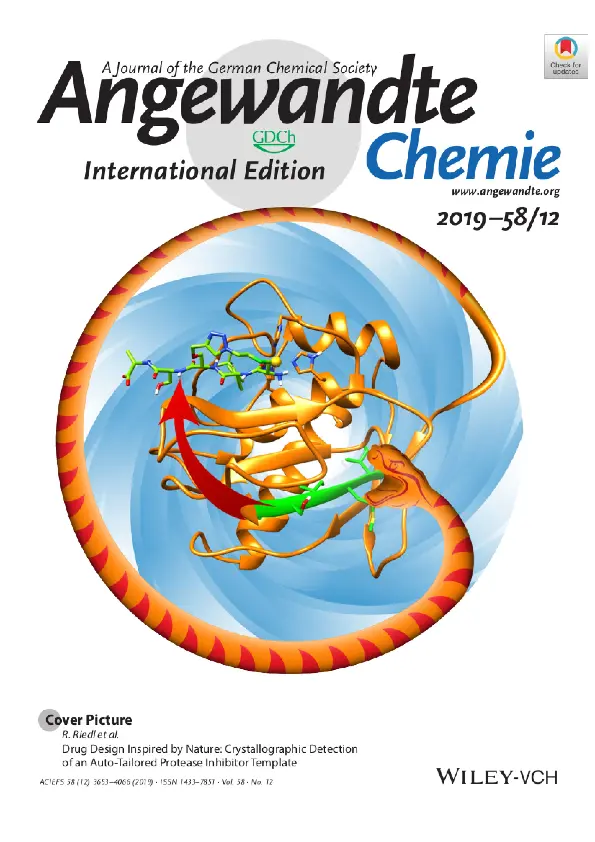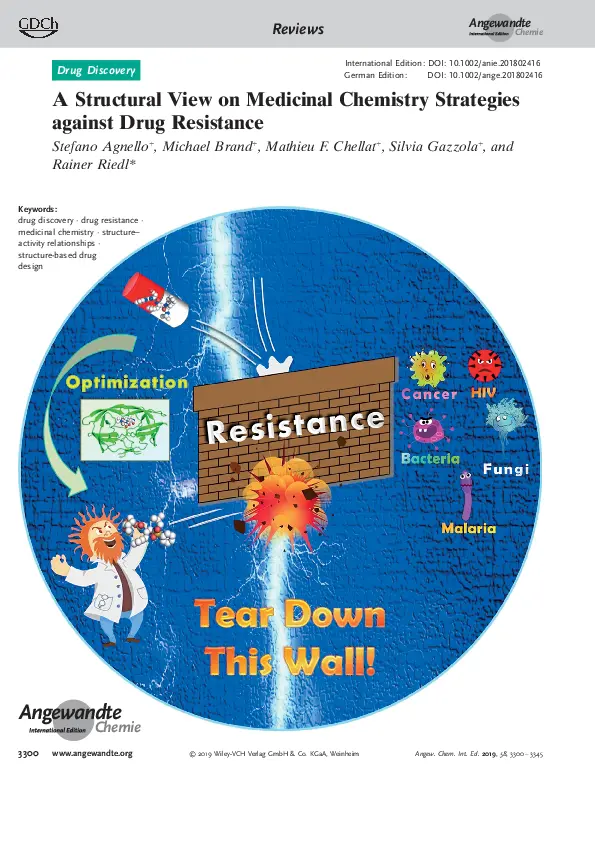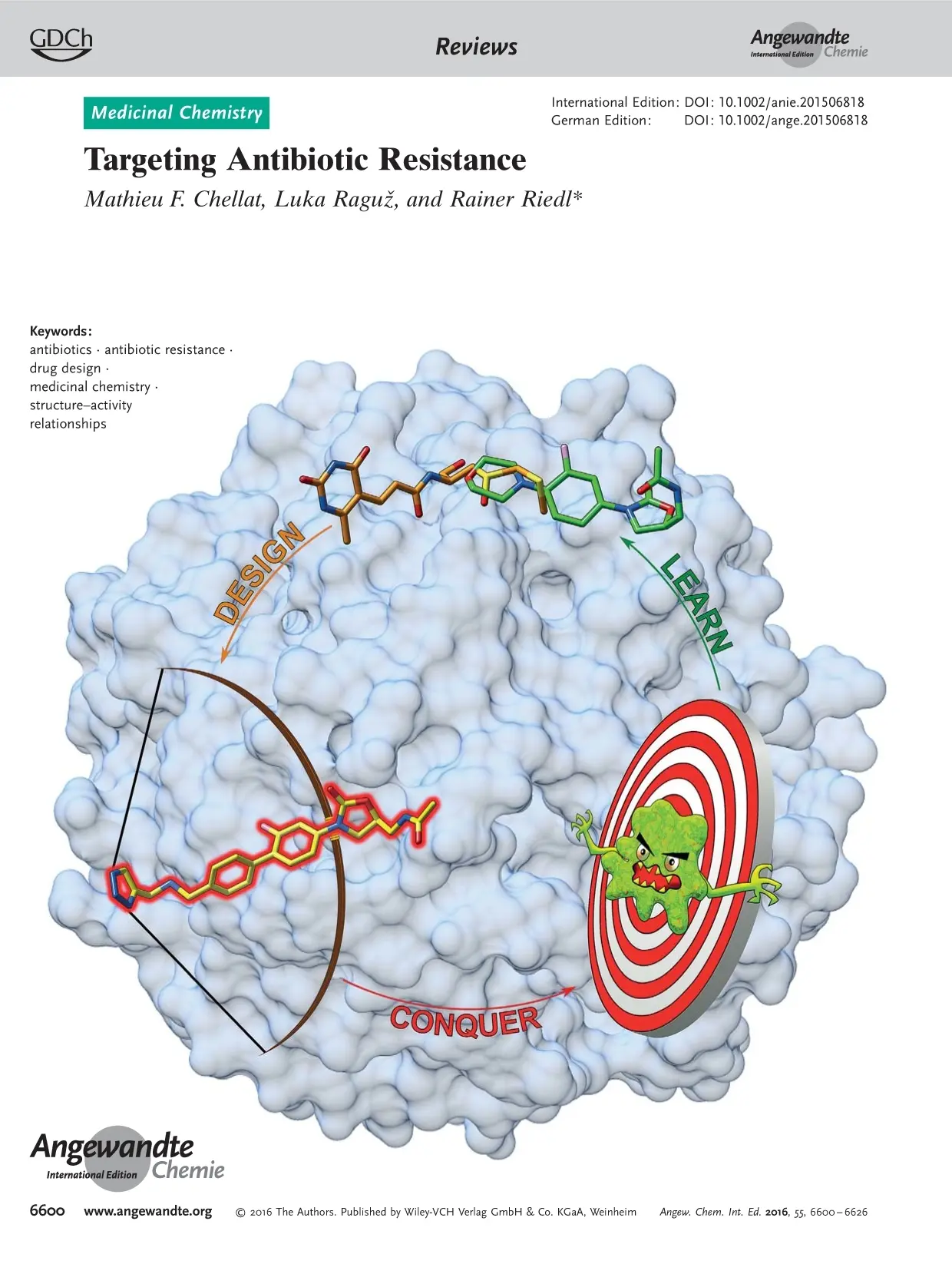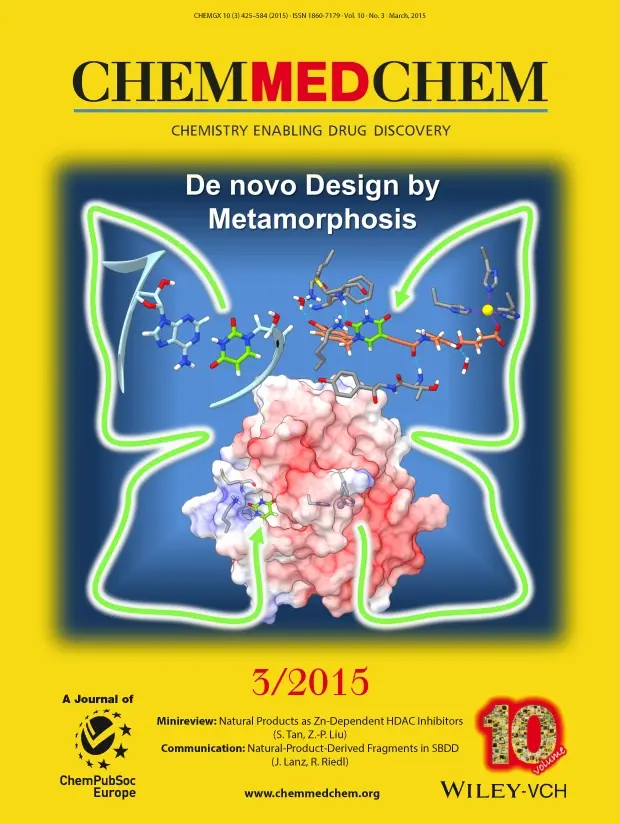Competence Center for Drug Discovery

The Competence Center for Drug Discovery (CC Drug Discovery) is dedicated to the discovery and development of new drugs for innovative therapies against serious diseases.
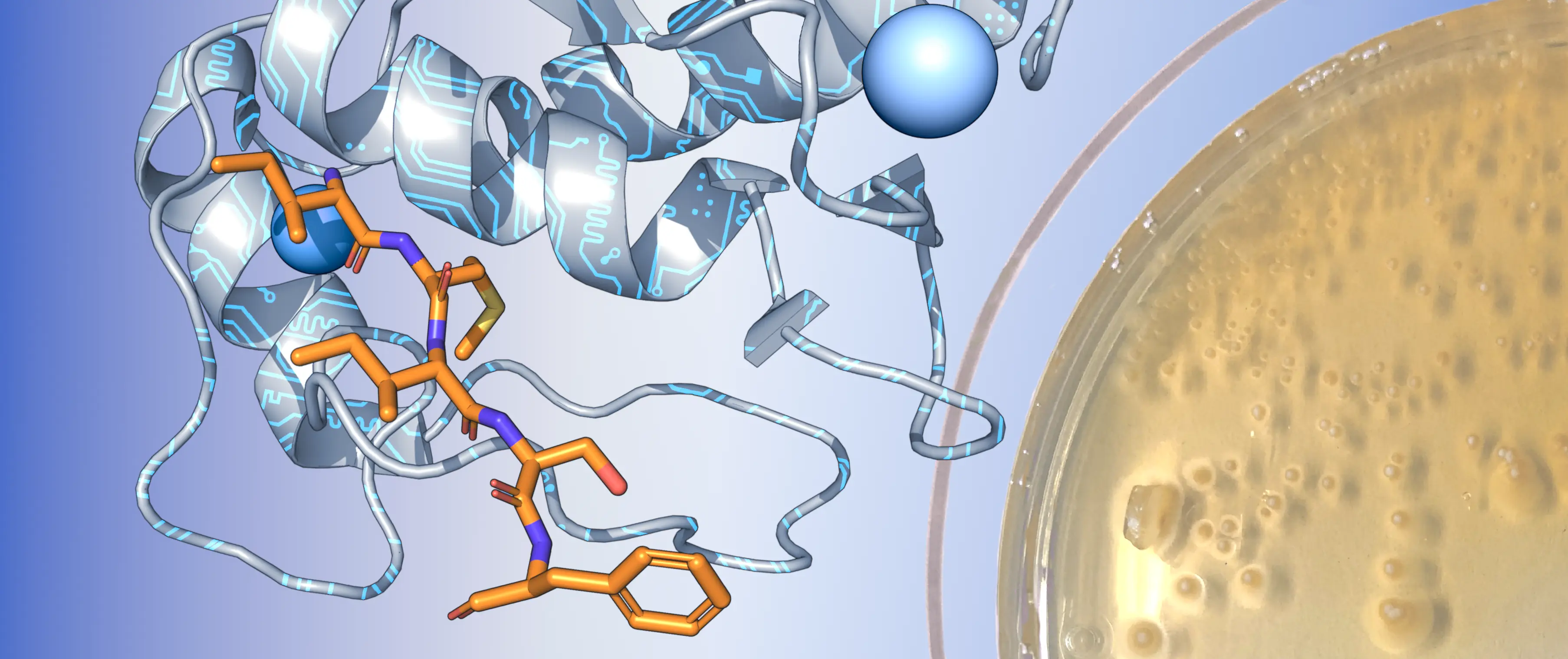
Translational drug discovery
The Competence Center for Drug Discovery at the ZHAW works on a national and international level with partners from industry and academia to develop new clinical drug candidates. Our mission is to address therapeutic issues in an interdisciplinary environment and to promote the synergy of biological, chemical and medical expertise. Our core competence in medicinal chemistry enables us to work with our partners on a range of indications (e.g. cancer, infectious diseases, metabolic diseases) for the benefit of patients.
2nd edition "Competencies in Drug Discovery"
The second edition of our symposium “Competencies in Drug Discovery”, brought together 160 international experts from industry and academia, providing both experienced scientists and young researchers with the opportunity for fruitful exchanges and discussions on the future of drug discovery.

1st edition "Competencies in Drug Discovery"
In June 2022, the first symposium “Competencies in Drug Discovery" took place at the ZHAW Wädenswil. During the symposium, projects from various therapeutic indications were discussed in an interdisciplinary environment to promote the synergy of biological, chemical and medical competencies.
Competencies
We cover the entire chemistry driven value chain of small molecule and peptide drug discovery:
- Medicinal Chemistry
- Organic Chemistry
- Computer aided drug design
- Natural Products
- Parallel and automated organic synthesis
- Microwave assisted organic synthesis
- NMR binding studies of small molecules
- Cheminformatics
- Recombinant protein production in different expression systems
- Protein characterization
- Microbial and cellular test methods
- Culture Collection of Switzerland (www.ccos.ch)
Projects
-
Therapy for the NRAS melanoma subtype
Melanoma is the fifth most common cancer in Switzerland and the most lethal skin cancer. NRAS (neuroblastoma ras viral oncogene homolog)-mutated melanoma is the most aggressive subtype, with no effective therapy after immunotherapy failure. The goal of this project is to develop the first effective…
expired, 02/2023 - 07/2024
-
Platform for drug target identification
A major problem in medicinal chemistry and drug discovery projects is the unknown identity of the molecular biological target, even when very potent ligands are available, such as those discovered in a phenotypic screen. Therefore, methods for hit optimization, such as structure-based design, or…
expired, 01/2023 - 12/2023
-
Inhibitors targeting SARS-CoV-2 proteases
So far, vaccines are available to combat the Covid-19 pandemic, which can protect against a severe course, although part of society also does not want to be vaccinated or cannot do so due to pre-existing conditions. With a drug that can fight the virus in the organism, infected patients with severe…
expired, 10/2022 - 03/2024
-
Extracellular vesicles for targeted delivery of new antimicrobials
Infectious disease caused by bacteria constitutes a major threat to human health. Althoughantibiotics control bacterial infections, their efficacy is mitigated by the rise of antibioticresistance. Further challenging elimination of pathogenic bacteria, some species such asStaphylococcus aureus,…
expired, 04/2022 - 10/2023
-
Developing novel and effective therapies for treatment of childhood brain cancers
Brain cancers are a leading cause of mortality in children. Brainstem glioma constitutes 10% of all pediatric central nervous system tumors, the most common type being a high grade diffuse midline glioma (DMG). Preclinical discoveries fail to translate into clinical success due to: i) drug systemic…
expired, 03/2022 - 08/2023
-
Development of new therapeutic approaches for the treatment of cancer
Further therapeutic approaches are urgently needed for the treatment of cancer. The aim of this project is to synthesize active substances that interact with biological target proteins relevant in cancer therapy. For this purpose, multi-step organic syntheses are carried out and the active…
expired, 11/2021 - 05/2023
-
Developing a gasotransmitter based treatment for pathological skin and tendon calcification
expired, 10/2021 - 09/2023
-
Development of small-molecules targeting CD93-signaling for the treatment of leukemia
The aim of the current InnoSuisse application is to optimize small molecules, which were identified in a drug library screen to block CD93-signaling in LSCs and showed a positive clinical response, in order to develop lead candidates with a novel chemical scaffold and own IP to treat leukemia.
expired, 01/2021 - 07/2022
-
Inflammasome inhibitors - Development of new inhibitors
Inhibition of the Inflammasome, a high-molecular complex, is a promising strategy to fight certain diseases with an (auto-)immune component, including gout, arthritis, Alzheimer's and Parkinson's.
expired, 06/2020 - 04/2022
-
Burn Wound Treatment
This project is evaluating inhibitors of matrix metalloproteinase 9 (MMP-9) for the treatment of burn wounds. A specific molecule that reduces the production and activity of MMP-9 in certain cells is being studied.
expired, 04/2020 - 09/2021
-
Silent pathway awakening to discover novel antibacterial compounds from actinomycetes
There is a tremendous need for novel antibiotics due to the global resistance crisis. Actinomycetes are the most important sources of secondary metabolites. They provide an enormous potential to discover novel antibiotics.
expired, 08/2019 - 01/2021
-
A topical anti-infective
ZHAWOC6027 ist a novel drug candidate against skin infections. In order to use it successfully, various properties need to be optimised.
expired, 05/2019 - 04/2021
-
Morbillivirus cell entry machinery: mechanisms, structures and antiviral drug discovery
expired, 04/2019 - 03/2025
-
Novel Antimicrobials for Life-Threatening Infections
Deaths due to antimicrobial resistance are alarmingly high, novel therapies are urgently needed. Here, novel antifungal compounds are developed against life-threatening infections. The compounds will be developed to preclinical proof-of-concept in a collaborative medicinal chemistry program.
expired, 04/2018 - 09/2019
-
Virus cell entry machinery: antiviral drug discovery
Development of small molecule inhibitors of the viral cell entry machinery.
expired, 04/2018 - 10/2018
-
Dynamic combinatorial chemistry in drug discovery
Das Ziel des Projekts ist die Etablierung einer Technik zur Auffindung neuartiger Wirkstoffmoleküle gegen biologische Zielenzyme durch die Anwendung und Erweiterung von dynamischen kombinatorischen Bibliotheken (DCL).
expired, 01/2018 - 12/2018
-
New antileishmanial and antitrypanosomal drugs
The aim is to develop a natural product derived LEAD compound with unrivalled potency against a parasitic disease into a clinical drug candidate, through preclinical development. This includes the establishment of a detailed structure-activity relationship (SAR), medicinal chemistry and organic…
expired, 09/2016 - 01/2019
-
New drugs for the treatment of protozoal infections derived from natural products
Development of natural product derived drug for the treatment of protozoal infections, and optimisation of its active principle.
expired, 08/2015 - 07/2016
-
Development of high temperature resistant, synergistic biocidal products for protection of PVC against microbial infestation for commercial…
expired, 07/2014 - 06/2016
-
HIT to LEAD to Preclinical Candidate development of a Transcription Repressor Inhibitory Compound (TRIC) that increases antibiotic…
A new and highly innovative treatment will be realized by a novel and patentable small molecule combinatorial drug candidate for the treatment of antibiotic resistance in multi-resistant, pathogenic staphylococci. The consortium integrates a screening platform, biophysical characterization of small…
expired, 09/2013 - 08/2015
Selected publications
- Antiprotozoal Structure–Activity Relationships of Synthetic Leucinostatin Derivatives and Elucidation of their Mode of Action / M. Brand, L. Wang, S. Agnello, S. Gazzola, F. M. Gall, L. Raguž, M. Kaiser, R. S. Schmidt, A. Ritschl, J. Jelk, A. Hemphill, P. Mäser, P. Bütikofer, M. Adams, R. Riedl, Angew. Chem. Int. Ed. 2021, 60, 15613.
- Drug Design Inspired by Nature: Crystallographic Detection of an Auto‐Tailored Protease Inhibitor Template / F. M. Gall, D. Hohl, D. Frasson, T. Wermelinger, P. R. E. Mittl, M. Sievers, R. Riedl, Angew. Chem. Int. Ed. 2019, 58, 4051.
- A Structural View on Medicinal Chemistry Strategies against Drug Resistance / S. Agnello, M. Brand, M. F. Chellat, S. Gazzola, R. Riedl, Angew. Chem. Int. Ed. 2019, 58, 3300.
- Pseudouridimycin: The First Nucleoside Analogue That Selectively Inhibits Bacterial RNA Polymerase / M. F. Chellat, R. Riedl, Angew. Chem. Int. Ed. 2017, 56, 13184.
- Targeting Antibiotic Resistance / Chellat, Mathieu; Raguž, Luka; Riedl, Rainer - Angew. Chem. Int. Ed. 2016, 55, 6600-6626; Angew.Chem. 2016, 128, 6710–6738.
- Molecular recognition of the catalytic zinc (II) ion in MMP-13: Structure-based evolution of an allosteric inhibitor to dual binding mode inhibitors with improved lipophilic ligand efficiencies / Fischer, Thomas; Riedl, Rainer - invited article for the Special Issue "Enzyme-Inhibitor Interaction as Examples of Molecular Recognition" Int. J. Mol. Sci. 2016, 17, 314. Front cover story 3/2016.
- Merging Allosteric and Active Site Binding Motifs: De novo Generation of Target Selectivity and Potency via Natural-Product-Derived Fragments / Lanz, Jan; Riedl, Rainer - ChemMedChem. 2015, 10, 451–454. Front cover story 3/2015.
Complete List of Publications
-
Fischer, Thomas; Riedl, Rainer,
2017.
ChemistryOpen.
6(2), pp. 192-195.
Available from: https://doi.org/10.1002/open.201600158
-
Abu Eid, S.; Adams, M.; Scherer, T.; Torres-Gómez, H.; Hackl, M.T.; Riedl, R.; Luger, A.; Fürnsinn, C.,
2016.
In:
Abstracts of 52nd EASD Annual Meeting.
52nd EASD Annual Meeting, Munich, Germany, 12–16 September 2016.
Springer.
pp. S343.
Available from: https://doi.org/10.1007/s00125-016-4046-9
-
Abu Eud, Sameer; Adams, Michael; Scherer, Thomas; Torres-Gomez, Hector; Riedl, Rainer; Luger, Anton; Fürnsinn, Clemens,
2015.
In:
16. Jahrestagung der Österreichischen Adipositas Gesellschaft: „Adipositas 2015, Vision & Wirklichkeit“, Wien, Österreich, 23.–24. Oktober 2015.
Springer.
pp. 735.
Available from: https://doi.org/10.1007/s00508-015-0838-z
-
Lanz, Jan; Riedl, Rainer,
2015.
Wiley.
Available from: https://doi.org/10.1002/cmdc.201590003
Team
